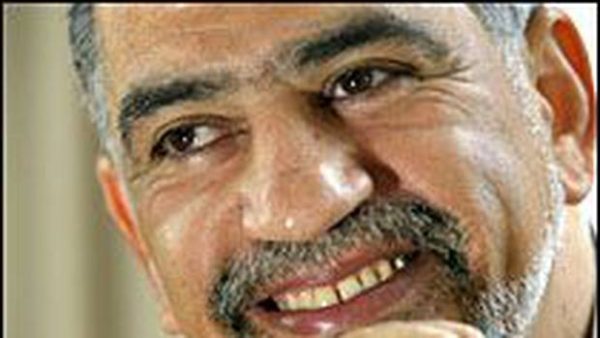Here is terrorism and betrayal: a very small part of the untold Zaoui story. This is a story that will never be truthfully told in NZ.

European intelligence sources and security experts believe that Ahmed Zaoui provided Algerian terrorists in Europe with financial or logistical support, although he played no active role in any violence.
Interviews with these sources and access to judicial files in France, Belgium and Switzerland in a weeks-long inquiry by the Weekend Herald shed crucial light on how Zaoui spent his five years in Europe.
They also help to explain one of the mysteries of the Zaoui affair: why, if he was supposed to be a big figure in Algerian terrorism, he was convicted only on minor charges before being flown out of Europe.
The reason, several sources say, was that Zaoui played at most a supporting role in the activities of the bloody Algerian terrorist group the GIA, and that police moves against him came after French authorities gave priority to dismantling the logistics networks that supported the terrorist groups.
In contrast with America’s all-out war on terror, French strategy has always been to attack terrorist networks at their weakest point – logistics and finances – to hinder their operations.
One source adds an intriguing new piece to the jigsaw. Zaoui, he says, was briefly bundled from Switzerland to France and was held in a safe house in the northern region of Normandy.
There, under questioning from French anti-terror investigating magistrate Madame Laurence le Vert, Zaoui turned informer, helping the French authorities to identify fellow members of his party, the Islamic Salvation Front (FIS), who were active in France.
“He collaborated with the French authorities in identifying FIS activists in France. When interest in the FIS faded, he was expelled back to Switzerland,” a former top intelligence officer of the French foreign intelligence service, the DGSE, told the Weekend Herald.
Among those the Weekend Herald interviewed were present and former senior officials in the Belgian and French intelligence agencies and counter-terrorist services who shaped their Governments’ action against Zaoui. Virtually all describe him as an ambiguous, even Machiavellian figure.
None of these suspicions features in any publicly accessible evidence in the Zaoui case in Europe. In his known testimonies, Zaoui repeatedly denied that he had dealings with the GIA and insisted that he adhered to the non-violent path of the FIS.
His supporters portray him as a peaceful theologian, a Muslim preacher who sought reform in Algeria but who has always opposed violence.
n its inquiry, the Weekend Herald learned that, after exhaustive and costly inquiries at home and abroad, investigators in Belgium, France and Switzerland all separately arrived at the conclusion that Zaoui was not a direct security threat.
Eventually, they became certain that he never played any direct part in the violence that the GIA perpetrated in Algeria and Europe in the mid-1990s.
On the other hand, his stay in Europe was shadowed by suspicions that he was a bridge between the non-violent FIS and the violent GIA (the dividing line between them was often blurred) and that he may have given support to terrorists in the form of money or false documents.
“The organisation led by Ahmed Zaoui was indeed aimed at directly supporting the commando instructed by [GIA leader] Djamel Zitouni to commit bombings in France in 1995,” France’s top anti-terrorism examining magistrate, Jean-Louis Bruguiere, told security experts at a seminar in May 2001.
Mr Bruguiere is the most adamant and outspoken of the investigators. Others entertain varying shades of suspicion about Zaoui.
One French intelligence source said: “He had numerous propaganda activities but was neither closely nor remotely involved in terrorist activities. However, it is possible that he knew violent militants and provided them with ‘help’ such as lodging and papers and so on.”
Added Richard Labeviere, a Swiss expert on Islamic terrorism and author of three books on Muslim militants: “There is not one piece of evidence that he was a terrorist. But he had lots of important roles and he was part of the structure that gave false passports to Algerians.
“This is someone who was between the FIS and the GIA. The Swiss authorities recognised him as an activist in Europe and he was expelled for his activities.”
In Belgium, a senior member of the intelligence anti-terrorist unit, Alain Grignard, said Zaoui had “connections with terrorist groups but not the real heavies”.
Mr Grignard is a fluent Arabic speaker who is an expert on Islamic cells in Europe.
“Zaoui was there at the door of both the armed and the political wing,” he said.
If Zaoui did indirectly help the men of blood, why was he not prosecuted for it?
The question is indeed puzzling, for the mountain of investigative documents seen by the Weekend Herald suggests that Zaoui and other FIS leaders were closely investigated, at the personal orders of the interior ministers at the time.
In the end, Zaoui was not prosecuted on any terrorism charges. He was prosecuted in France and Belgium on charges of criminal association and over false passports.
In Switzerland he was simply whisked out of the country on a private plane, heading for Burkina Faso, West Africa, in 1998.
Zaoui’s supporters say there was no terrorism charge because of a lack of evidence: in other words, he was an innocent man, a peaceful dissident.
But the security sources say there were several reasons Zaoui faced only relatively minor charges. It would have prejudiced important sources for the agencies to go to court over a man who was less than a kingpin and, in any case, would be of little operational use to any terrorist group after so long in detention.
“Zaoui was dangerous in the 1990s, but now there are different people organising these groups,” says Labeviere. “Zaoui was part of a movement that has now been demolished in Europe.”
Terrorism and betrayal: the untold Zaoui story
